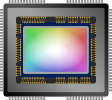Pier-5 Equipment List
Telescope | Takahashi Epsilon 180 F/2.8 Astrograph |
Mount | Paramount MX |
Camera | ZWO ASI 2400MC Pro Colour CMOS 35mm Sensor |
Filter Wheel | ZWO 5 Position 2" |
Filters | See Below |
Guide Camera | N/A |
Guider | N/A |
Focuser | Moonlite Stepper Motor |
Power & Dew Control | Mount Hub pro V4 |
-
Recommended sub lengths
| Filter | Bright | Dim | |
|---|---|---|---|
OSC | 30-60s | 60-120s | |
Baader Swan Comet Filter | 10-30s | 30-60s | |
IDAS - LPS-D3 RGB Filter | 30-120s | 120-180s | |
Askar Colour Magic HA/OIII 6nm | 60-120s | 120-180s | |
Askar Colour Magic SII/OIII 6nm | 60-120s | 120-180s |
-
Filter Charactristics
Baader SWAN Comet Filter -
The Baader C2 SWAN-Band-Filter with ≤ 15 nm Half-Band-Width isolates the two C2 lines at 511 and 514nm. Making it ideal for a Comet's tails whilst eliminating O3 from the signal.
IDAS LPS-D3 Filter -
The IDAS LPS-D3 filters enhance the contrast of astronomical emission nebulae against a sky with both man-made and natural* sky glow sources, yet preserve the colour balance of broadband objects such as galaxies. As with other IDAS interference filters, the bandpasses are designed to accommodate the steep ray angles of fast optical systems.
Askar Colourmagic HA/OIII & SII/OIII 6nm -
The filter enables the capture of the three main emission nebulae bands using two different filters, whilst suppressing unwanted light pollution. It enables you to capture cleaner data and reduces the post-processing efforts to isolate faint details from the background light pollution
-
Pier Specifications
-

4.13° x 2.75°
-

2.45 "/px @ 1x1 Binning
-

500mm Focal Length
-

F/2.8
-

25º Imaging Horizon Limits
-

Camera Position Angle:+93°
-

180s Maximum Sub Length
-
Sensor Specifications

| Sony IMX410Back Illuminated CMOS Sensor |
Bayer Matrix Parameters - RGGB |
Calibration Files
This pier has a FREE calibration library, this includes a dark library that correlates to the most common subs lengths used, see below
-
10s Darks
-
20s Darks
-
30s Darks
-
45s Darks
-
60s Darks
-
90s Darks
-
120s Darks
-
180s Darks
-
Bias Frames
-
Flat Frames




